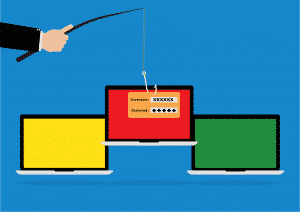Email security best practices
Adrien Gendre
—October 23, 2017
—3 min read

No matter how much data security your organization has in place, email remains your Achilles’ Heel. Today, email is the primary vector for global cyber threats, with industry data clocking 91 percent of malware attacks coming from email. For this reason, implementing email security best practices has become a mandatory step for protecting your organization from security threats.
How to Take Email Security to the Next Level

91% of malware is delivered via email, which is why it is critical that organizations take the security precautions necessary to protect themselves from these advanced threats.
Email Security Best Practices
Gartner is one of the world’s leading research and advisory firms, helping organizations across the globe implement and manage IT infrastructure. Recently they issued several recommendations for securing company email from new and evolving cyber threats. We thought we’d review a sample of these email security best practices. For each one, ask yourself if your current email security system is currently meeting or exceeding these demands.
1. Antivirus engines
To increase detection and prevention rates, use a diverse array of antivirus engines that scan email content; for example, use one antivirus engine at the email gateway and use another for your endpoint systems. Ideally, the email gateway should support the use of multiple engines.
2. Secure email gateways (SEGs)
Review and consider secure email gateways (SEGs) that can guard against both URL links and attachments with active content that cannot be blocked by policy (such as PDF and Microsoft Office file types). Strip out or quarantine all executable content from email attachments, and ensure that all email content types and attachments are being evaluated for malware.
3. Mobile device security
Recognize that all mobile devices must be addressed with endpoint security technologies, mobile device security, and secure Web and email gateway services because their network traffic does not pass efficiently through legacy network defenses (backhauling traffic often creates greater latency).
Vade goes above and beyond email security best practices
These are all worthwhile security steps, and even if you’re currently meeting all of them, we’re confident that Vade can be a critical tool for you. That’s because Vade can help you go above and beyond Gartner’s recommendations to guard against today’s most evolved cyber threats, including zero-day attacks.

Our advanced processes that augment email security best practices include:
- Several countermeasures to defend against these zero-day attacks—something most anti-malware programs can’t protect against. Our solution uses a webpage exploration engine that protects email recipients from URL-based phishing attacks at the “time of click.” This technique can catch dynamic links as well as “sleeper” malware and phishing pages.
- Enhanced anti-phishing defenses that develop an overall sense of the user. We use proprietary technology to identify the style and technical indicators of each sender so we can match them to potentially fraudulent emails. Behavioral analysis examines everything from file names and header fingerprints to the code and commands embedded in attachments. This is accomplished by a local machine learning system that complements our global network of machine learning systems in our threat centers.
- A combination of local and global information that creates a distinct profile of each user and their contacts. The system can then spot similarities and differences in messages that might indicate an impersonation is taking place. This distinctive, in-depth defense system is bolstered by two external antivirus solutions to weed out virtually all malware.
- Notifications to system administrators if users are clicking on suspicious links. The solution keeps track of original URLs, even if they are later changed. This is helpful for long-term security, as malware links are sometimes clicked in old emails.
Our advanced email security solution backed by artificial intelligence (AI) allows to defend against the most advanced threats including polymorphic malware and zero-day attacks.
Vade is your next-level defense against phishing and spear phishing

When defending against phishing, pure signature or blacklisting-based approaches are no longer effective. IP address filtering, URL filtering, and email sender filtering have become untenable, mostly due to the false positives or the changing context of the threat.
For this reason, Gartner’s email security best practices include the recommendation that next-generation security platforms incorporate cloud-based community context to determine the relative reputation of an entity — typically, an IP address, file, or URL.
Spear phishing is even harder to detect. Unlike spam or malware-bearing emails, which might be detected by filters, a personalized message will not trigger a malware filter. It’s not carrying an attachment or URL that can be analyzed and quarantined. It doesn’t contain any standard phishing language.
Vade not only meets but exceeds Gartner’s best practices for phishing and spear phishing. As Gartner recommends, we tap into a deep global database of emails and AI routines to gauge the reputation of an email sender. We evaluate all inbound emails according to multiple factors, including IP address, URL, style, previous context, and others.
We evaluate numerous content and technical factors including IP addresses, URLs, style, previous context, and more to ensure even email threats without malicious attachments don’t make it into your inbox.
We also use local AI routines and data to study exchanges between specific people, identify the similarities for future conversations, and quickly recognize the inevitable stylistic and contextual differences that an impersonation attempt brings. Identifying these subtle differences in conversations is the best way to reveal spear phishing.
Want to learn more about how Vade meets Gartner’s best practices for detecting and mitigating email threats? Download the Gartner Newsletter Fighting Email Threats with Predictive Defense – Featuring Best Practices from Gartner or contact us.



